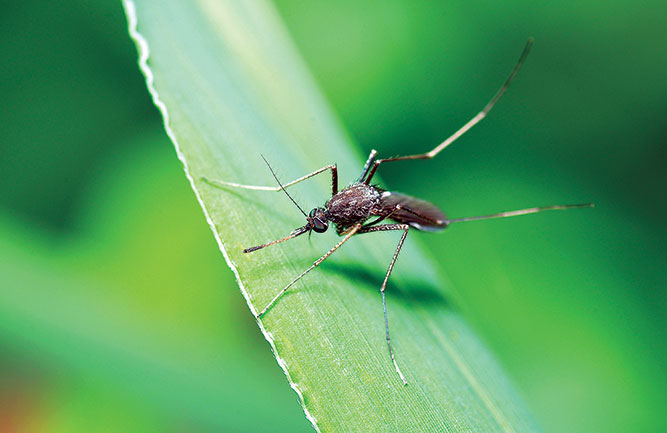Turf Pest: Biting back at mosquitoes

An uptick in mosquito activity is directly correlated to rain events. Container breeding mosquitos will lay eggs in water as shallow as a 3/4 inch to an inch deep (Photo: pernsanitfoto / iStock–Getty Images Plus / Getty Images)
There are more than 200 types of mosquitoes in the U.S., but a few general characteristics include long, slender legs, scales on their wings and legs and a proboscis they use as a needle to gain access to blood vessels, according to Janis Reed, Ph.D., board-certified entomologist and technical services manager for the Pest Control Division of Control Solutions Inc.
“If it’s landing on you, biting you and getting blood out of you, it’s probably a mosquito,” Reed says. “More than a dozen species of mosquitoes bite people and transmit diseases. With players and crew members working, it’s all about protecting them from the bite. There are some mosquitoes that transmit diseases, but there’s also a factor of comfort.”
Adult floodwater mosquito females lay their eggs in areas filled with water.
“There is a definite correlation with that group of mosquitoes between significant rain and about seven days later, a significant uptick in mosquito activity,” Reed says.
Reed adds that container breeders can breed in any vessel that holds water, such as an old paint can or a 5-gallon bucket or even a yogurt container, as long as it holds about 3/4 to 1 inch of water.
To help control mosquitoes, superintendents should find and eliminate as many breeding sources — liquid standing water — as possible.
Reed suggests filling in tire tracks, low spots that constantly hold water and ruts with sand.
To treat a mosquito population that’s already gotten out of control, Reed says mosquito granules and insecticides work well.
“You take the granules and you can sprinkle them by hand or right out of the jug or apply them into large areas with something like a belly spreader or handheld crank spreader,” Reed says. “You can treat large volumes of water very fast and stop the mosquitoes from breeding in that area.”
For insecticide treatments, Reed recommends putting down about 1 to 2 ounces per 1,000 square feet, ensuring that the technician is properly trained and licensed and following label instructions.











